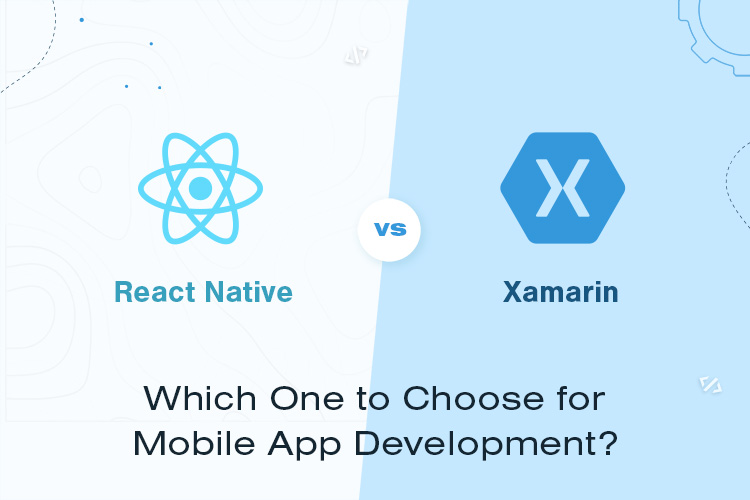Mobile app development has been around for a while now and it has grown into a multi-billion-dollar industry. There are quite a few app development frameworks that you can choose from, but React Native is one of the most popular ones out there. But, Xamarin is another mobile app development platform that you have to consider too.
To choose whether to go for a React Native or a Xamarin, you need to know their pros and cons and also what they are. So, let’s get started!
Why Mobile App Development?
Mobile app development is a process by which a mobile app is created for devices such as smartphones, tablets, and other handheld devices. There are many different approaches to mobile app development, but the two most popular ones are React Native and Xamarin.
React Native is a JavaScript framework that allows you to create native apps for Android and iOS. It is open-source and cross-platform, meaning that it can be used on any operating system. Xamarin also allows you to create native apps for Android and iOS, but it uses the C# programming language instead of JavaScript.
So, which one should you choose for your mobile app development project? Let’s take a look at some of the key differences between React Native and Xamarin.
React Native
React Native is a JavaScript-based framework for designing and developing cross-platform mobile applications. It allows developers to create native user interfaces for Android and iOS using React, a JavaScript library for building user interfaces.
Some of the world’s largest corporations, including Facebook, Instagram, Airbnb, and Walmart, use React Native. React Native has been successfully used to create apps with a wide range of functionality, from simple games to complex financial planning tools.
Recent Statistics
In recent years, React Native has become one of the most popular frameworks for mobile app development.
If you’re considering using React Native for your next mobile app development project, then you should be aware of some recent statistics about the framework. Here are some key statistics to remember:
- According to Statista, as of January 2018, there were 1.3 million apps available in the Apple App Store that were developed using React Native. This represented a 50% increase from the previous year.
- According to SimilarWeb, as of November 2017, the top 3 countries where people use ReactNative are India (27%), the US (19%), and Brazil (10%).
- In fact, according to a recent report from App Annie, React Native is the second most popular framework for developing mobile apps.
Advantages of React Native
There are several advantages of React Native that make it a great choice for mobile app development, including:
- Cross-Platform Support: React Native apps can be run on both Android and iOS platforms, making it a great option for businesses that want to develop apps for both audiences.
- Fast Development: React Native allows for fast development, thanks to its hot reloading feature which allows developers to see changes they make in the code instantly reflected in the app.
- Cost-Effective: Developing a React Native app is generally more cost-effective than developing a native app from scratch, since only one codebase needs to be created and maintained.
- Access to Native APIs: With React Native, you have access to all the native APIs that you would have access to if you were developing a native app, meaning you can create truly native experiences for your users.
Disadvantages of React Native
There are a few key disadvantages of React Native that should be considered when weighing your options for mobile app development.
- React Native is a relatively new framework and is thus not as battle-tested as something like Xamarin. This can lead to potential stability and performance issues down the road.
- Since React Native relies on JavaScript, it can be challenging to find high-quality developers with the necessary skill set.
- React Native apps can end up looking somewhat “generic” compared to those built with platform-specific technologies like Xamarin.
Xamarin
Xamarin is a cross-platform mobile app development framework that allows developers to create native apps for Android, iOS, and Windows using a single codebase. Xamarin utilizes the C# programming language and the .NET platform.
Xamarin was created in 2011 by MonoTouch co-founders Miguel de Icaza and Nat Friedman. Microsoft purchased it in 2016.
Xamarin apps are built using the Model-View-ViewModel (MVVM) architectural pattern. This pattern separates an app’s logic from its user interface, making it easier to develop and test cross-platform apps.
Recent Statistics
Xamarin is a cross-platform app development framework that allows developers to create native apps for multiple platforms using a single codebase. Xamarin has been around for several years and is one of the most popular frameworks for cross-platform app development.
- Recent statistics show that Xamarin is used by over 1.4 million developers worldwide and is the third most popular mobile app development platform, behind only iOS and Android.
- Xamarin is also the fastest-growing platform among the top three, with a growth rate of nearly 50% in the past year.
Xamarin features
Also, Xamarin includes several features that make it an attractive option for mobile app development, including:
- Cross-platform Compatibility: Xamarin apps can be published to multiple platforms from a single codebase.
- Native UI: Xamarin allows developers to create apps with native user interfaces (UIs). This means that each platform’s specific UI elements – such as iOS’s Tab Bar or Android’s Navigation Drawer – can be utilized in a Xamarin app.
- Performance: Xamarin apps are compiled ahead of time (AOT), resulting in faster performance than interpreted languages like JavaScript. In addition, Xamarin uses platform-specific hardware acceleration features when available.
Xamarin is another popular mobile development platform that enables developers to create native iOS and Android apps using C# and .NET. Xamarin also offers code sharing across platforms, allowing developers to reuse code between iOS and Android projects. In addition, Xamarin has access to all the native APIs and UI elements of each platform, making it possible to create truly native apps.
Advantages of Xamarin
- Truly native apps
- Access to all native APIs and UI elements
- Code sharing across platforms
Disadvantages of Xamarin
- Longer development times
- More expensive
Summing Up
If you’re looking to develop a mobile app, you may be wondering which platform to use. React Native and Xamarin are both popular options, but which one is right for you?
React Native is a great choice if you’re looking for a fast and efficient way to develop your app. However, it does have some limitations, such as not being able to access certain native features on devices.
Xamarin, on the other hand, offers full access to native features and can be used with any programming language. However, it can be more expensive and time-consuming than React Native.
So, which one should you choose? It is dependent on your specific needs and specifications. If you need a quick and easy solution, React Native is a great choice. If you need more control over your app development process, Xamarin might be a better option. Get started soon by partnering with the best Xamarin or React Native development company India by selecting one that suits you the best!
Karthik Sakthivel is the CTO of Pyramidion Solutions, a leading mobile app development company. He is a Data Science expert and Blockchain enthusiast who is always looking for innovations and new technologies. He takes pride in guiding the teams with the best approaches using state-of-the-art technologies!




